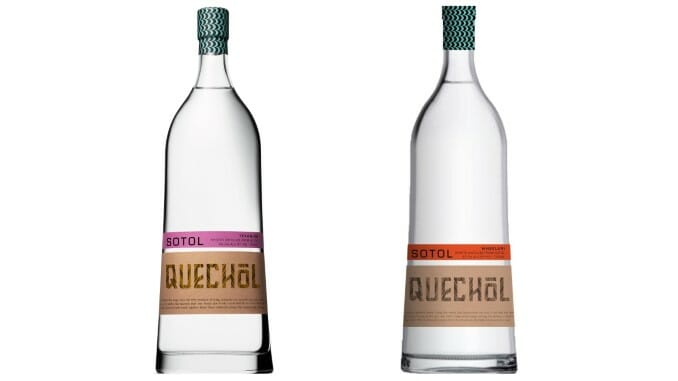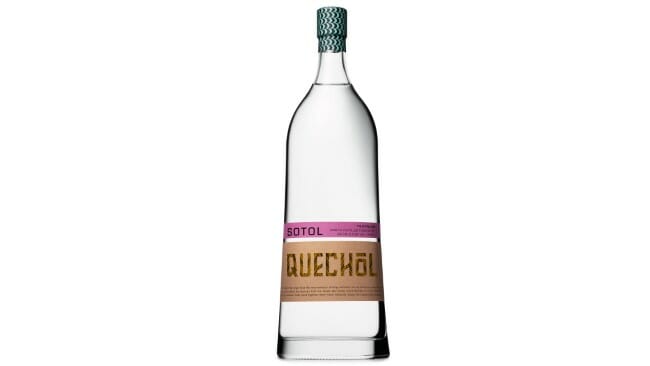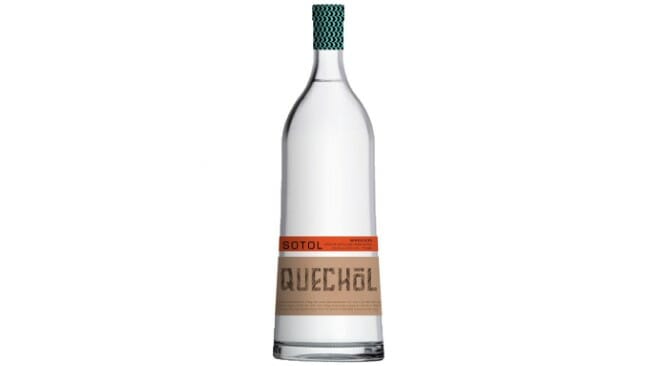
It’s likely only been about six months at this point since I tasted sotol for the first time, but the traditional and unorthodoxly flavored Mexican spirit has quickly become one of my favorite potables. It’s still a spirit that exists only on the fringes of the cultural consciousness for cocktail and liquor geeks, but sotol appears to be making rapid inroads, with new brands finding their way onto American package store shelves. It’s a spirit with many similarities to tequila and mezcal in terms of production, but it’s also a beverage all its own. As I wrote in this essay a few months ago, introducing sotol to the masses:
Like tequila and mezcal, the sugars used to ferment (and then distill) sotol come from the cores of a common desert plant, but rather than any species of agave, sotol is made from … sotol, which is also the name of the plant. The “desert spoon” is a plant with many species and names, with sotol liquor commonly being made from the likes of Dasylirion wheeleri (desert spoon, spoon flower, sotol, common sotol) or Dasylirion leiophyllum (green sotol, smooth-leaf sotol, smooth sotol). They’re flowering succulent plants in the asparagus family, with long, thin, spiny leaves that make the plant overall look quite like a spiny sea urchin. Varieties of sotol grow throughout Northern Mexico, commonly found in the deserts of Chihuahua or forests of Oaxaca, but the range of wild sotol plants also creeps into the U.S. in Arizona, New Mexico and Texas. As a result, sotol is potentially both a Mexican and American spirit, though the tradition of sotol production in Mexico goes back much farther into the past.
The cores, or piñas, of the sotol plant are roasted in underground pits, as in the production of mezcal, although for whatever reason most of the sotols I’ve tasted haven’t had nearly the same overt smokiness as your average mezcal. Rather, sotol often tastes like an herbaceous explosion, celebrating the plant-forward flavors of its point of origin.
Quechol Sotol, meanwhile, is one of the brands that seems poised to make sotol a household expression in the U.S., with an aggressive marketing plan that has seen bottles shipped all over the U.S. to various spirits writers and influencers. The company is clearly making a big push here, assisted by its attractive bottles and multiple styles of sotol, made from different species of the titular plant. Each has a respectable alcoholic strength around 90-92 proof, and is being positioned at a fairly premium price point of $60. What kind of value does that represent for this segment? It’s honestly difficult to say, given the availability of a significant number of other sotol brands in the $30-40 range. It begs the question of what makes the difference in price points for sotol, in a field where almost all the entries are unaged, “joven” spirits. This category is still new enough to U.S. consumers that the market hasn’t really come to a consensus just yet.
Regardless, I haven’t yet had the opportunity to taste sotol made from two different desert spoon species against each other, so these two bottles from Quechol represent a valuable opportunity to do just that.
Quechol Sotol TexanumABV: 46.3% (92.6 proof)

Dasylirion texanum, as the name would suggest, is a species of sotol that is native to the U.S., also known as the Texas sotol, although both of Quechol’s bottles come from plants harvested in the Chihuahuan desert in Durango. According to them, “Texanum is one of the biggest Dasylirion plants and their piñas weigh an average of 110-130 pounds at harvest,” which is quite big indeed. The spirit is produced by cooking the cores in a volcanic rock pit oven for three days, fed by mesquite, before the cores are shredded and undergo natural fermentation without the use of additional cultivated yeast. The fermented liquid is then distilled twice in copper pot stills.
Quechol Sotol Texanum presents as earthy and musky on the nose, with a little bit of stinging heat initially. There’s a variety of cooked impressions, a slight trace of caramel, and vegetal tones. Over time, I’m getting some nutty impressions here, suggesting roasted almonds, but this is overall a more mild nose than some of the other sotols I’ve tasted. On the palate, this one is a little sweet, herbaceous and just a bit spicy. Notably mild overall in terms of its assertiveness, especially for the 92.6 proof, the Texanum offers a gentle herbal sweetness with some pepper and anise. Darker fruit impressions can also be teased out over time; I am left thinking of something like stewed plums. Of the two bottles, this one is “darker” in the impression it leaves, with a broader and less sharp flavor profile.
Quechol Sotol WheeleriABV: 45.5% (91 proof)

Dasylirion wheeleri seems to be the most common species of sotol, at least for the production of the spirit, and many of the bottles on the market are made from this species. The bottle from Quechol is produced in the same manner as the Texanum, and bottled at a slightly lower proof.
The nose on this one quickly announces that the differences between the two brands will be fairly easy for most drinkers to perceive—they’re similar, certainly, but the Wheeleri immediately stands out in a different way from the Texanum. This one is significantly brighter and sweeter on the nose, with much more pronounced, tangy fruit tones of lemon of grapefruit, paired with bay leaf and a little brown spice. Clove, perhaps? On the palate this is likewise tart and punchy, while also being significantly sweeter than the Texanum. That sweetness and acid makes for a brighter and more angular profile, suggesting creme bruleed grapefruit, and a habanero-like fruitiness, albeit without the chile heat. The Wheeleri is also sort of perfumey and floral, which to me likely makes this one the more attractive of the two for neat drinking purposes.
All in all, both of these sotols are intriguing, although notably they’re also more mild and less aggressive/exotically flavored than some of the other bottles I’ve had in this genre. To me, both of these Quechol bottles seem more welcoming to new drinkers who are perhaps unfamiliar with sotol as a category—some of the others I’ve had are more challenging, weird and novel, but Quechol Sotol feels more like a bridge from the familiarity of tequila and mezcal. For a new category in the U.S. market, that’s probably feedback they’ll be happy to hear.
Jim Vorel is a Paste staff writer and resident beer and liquor geek. You can follow him on Twitter for more drink writing.